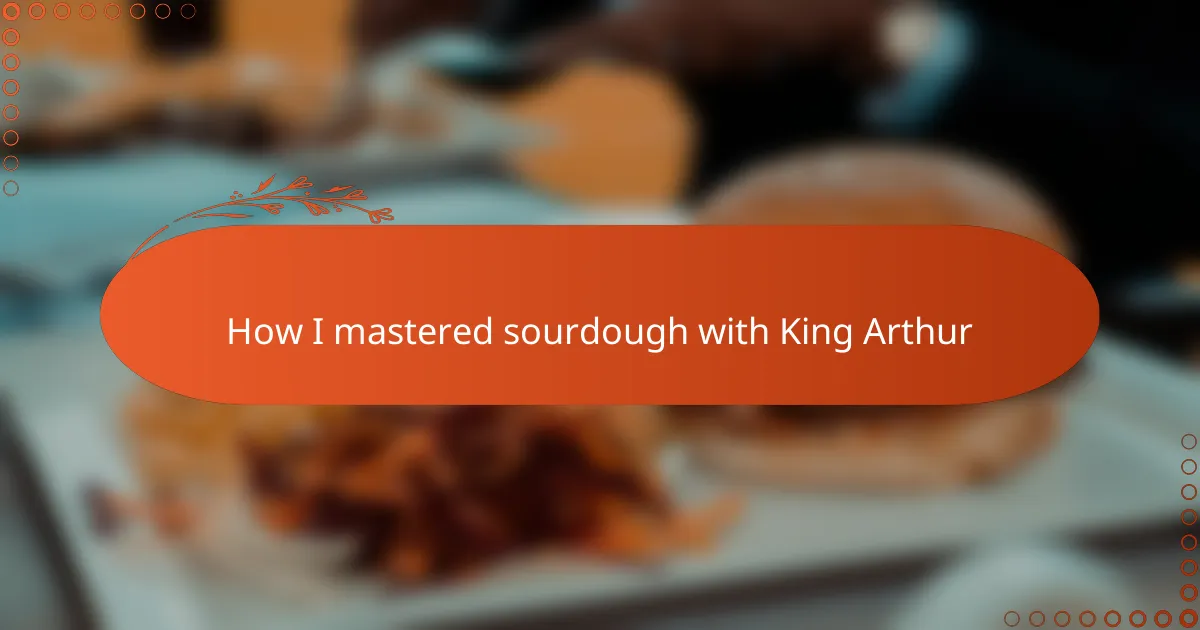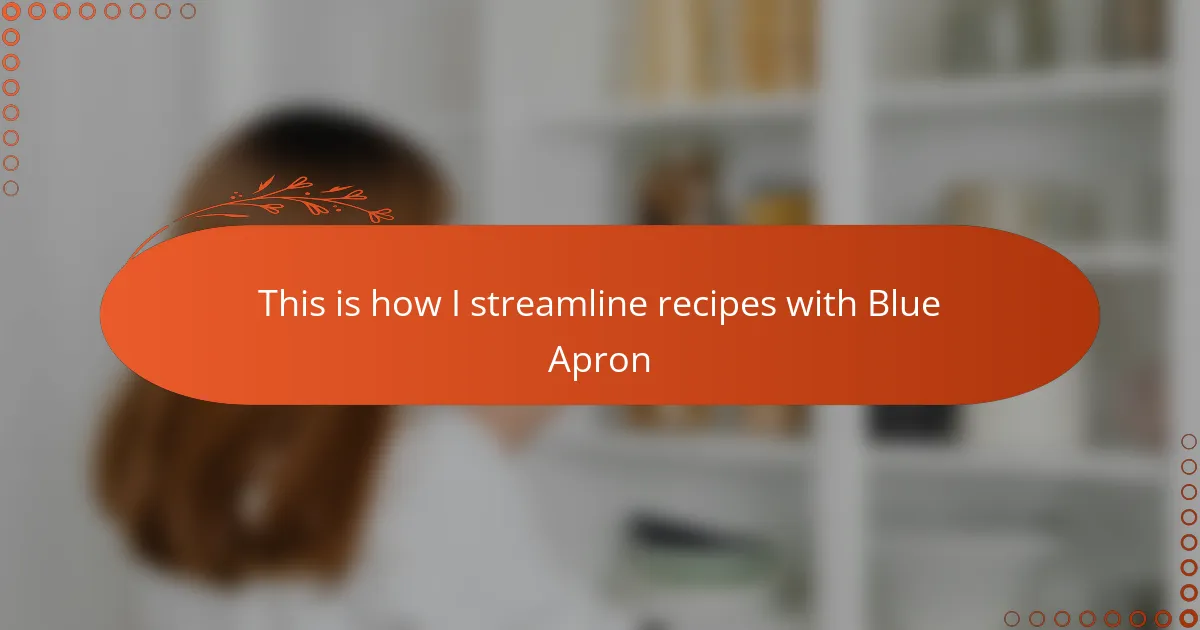Key takeaways
- Sourdough baking emphasizes natural fermentation, patience, and connection to tradition, turning the process into a meaningful ritual.
- Choosing high-quality flour, like King Arthur, enhances dough strength, elasticity, and overall baking success.
- Essential tools, including a digital scale, Dutch oven, and dough scraper, significantly improve the baking process and outcomes.
- Baking mastery comes from understanding dough characteristics and making small adjustments based on observation and experience.
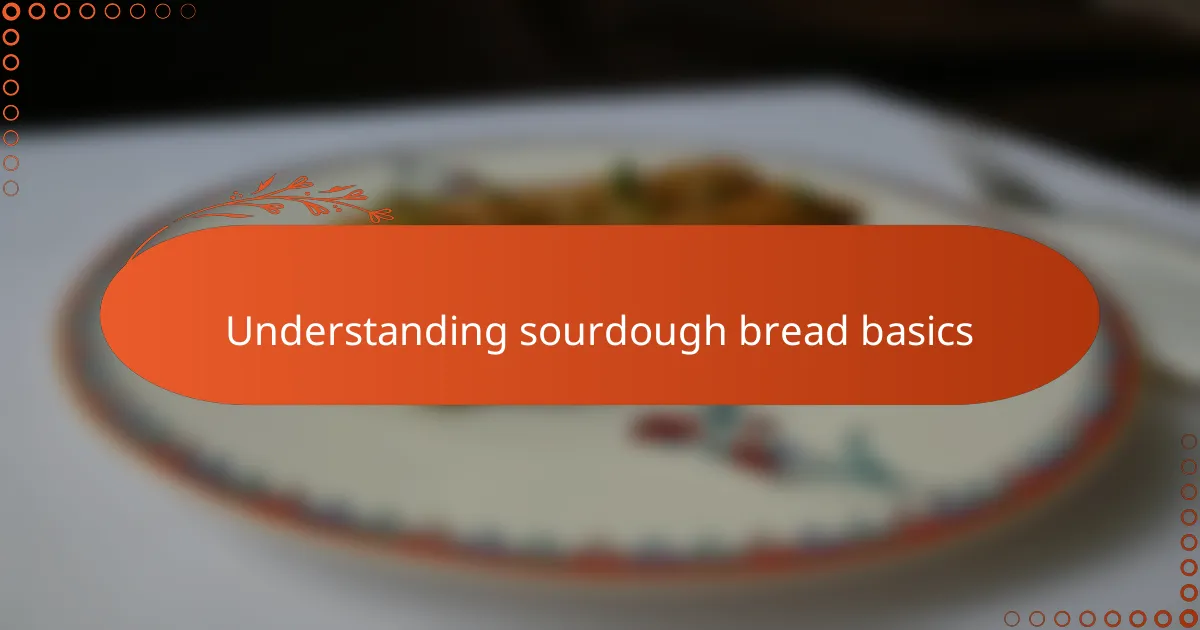
Understanding sourdough bread basics
Sourdough bread is truly an art form built on a simple foundation: flour, water, salt, and time. What fascinates me most is the natural fermentation process driven by wild yeast and lactic acid bacteria. Have you ever noticed how this slow fermentation not only creates complex flavors but also results in a wonderfully chewy texture and tangy crust?
When I first started baking sourdough, I was amazed by how the starter—a living culture—needed regular feeding and nurturing, much like a small pet. This biological dance between microorganisms often felt unpredictable, yet deeply rewarding each time my loaf rose beautifully. Understanding that sourdough is more about patience and observation than precision transformed my approach to baking.
Isn’t it interesting how sourdough connects us to centuries of tradition and nature’s own rhythms? Knowing this has made every loaf I bake feel like a meaningful ritual rather than just a recipe. It’s this connection that keeps me coming back to the process, eager to learn and perfect my bread with each try.
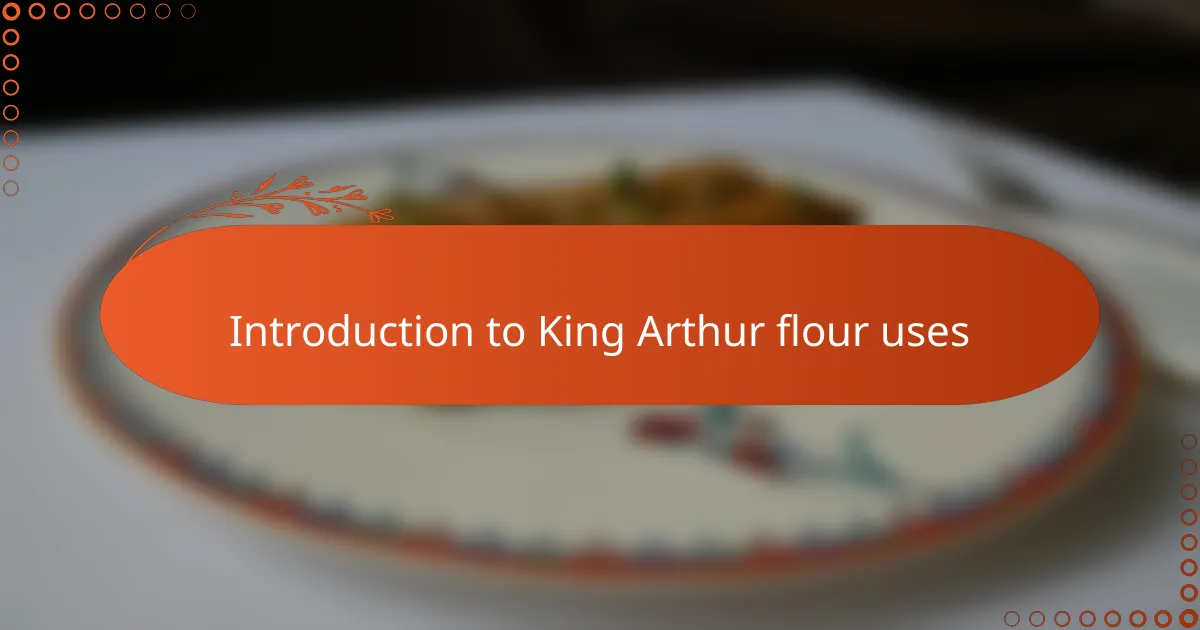
Introduction to King Arthur flour uses
When I first discovered King Arthur flour, it quickly became my go-to for all baking projects. What I love is how versatile it is—whether I’m making sourdough, pastries, or even pizza dough, this flour consistently delivers reliable results. Have you ever wondered why some flours behave differently? King Arthur’s high-quality milling and protein content give it a strength and elasticity that really supports long fermentation.
What makes King Arthur flour stand out to me is not just its performance but the trust it inspires. I recall early attempts where switching to their flour suddenly meant my dough was easier to handle and my crust crispier. It felt as if the flour itself was encouraging me to keep experimenting and getting better.
Using King Arthur flour has taught me how important flour choice is in baking, especially with something as delicate as sourdough. It’s not just an ingredient; it’s the foundation of everything that follows in the mix. Don’t you find it satisfying when a simple change like this makes a huge difference in your baking journey?
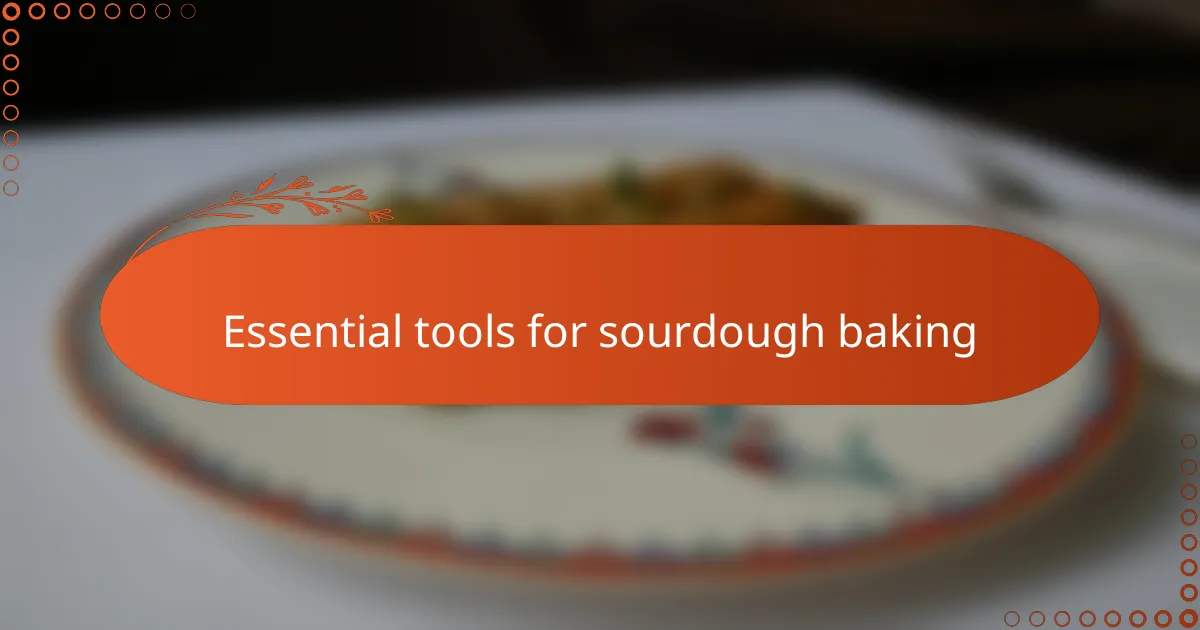
Essential tools for sourdough baking
When I first dove into sourdough baking, one tool quickly became my anchor: a sturdy digital scale. Precise measurements may sound rigid, but weighing your flour and water helps you develop intuition over time. Have you ever tried eyeballing ingredients only to end up with a sticky mess or a dense loaf? Using a scale took the guesswork out of my early bakes and gave me confidence.
Another game-changer for me was a good Dutch oven. The heavy lid traps steam beautifully, mimicking the conditions of a professional steam-injected oven. I remember the first time I baked in one—it transformed my crust from soft and pale to deeply caramelized and crackly. Investing in this tool felt like unlocking a new level in my baking adventure.
Finally, I can’t emphasize enough the value of a simple dough scraper. It’s such a humble tool, yet it saves me from sticky hands and keeps my work surface clean. When shaping or folding dough, it’s like having an extra pair of hands that moves gently without tearing the delicate crumb. Have you noticed how a few right tools can make sourdough baking feel less like a chore and more like a joyful ritual? I certainly did.

Step by step sourdough recipe guide
Starting the sourdough process with King Arthur flour was a game-changer for me. I followed their step-by-step guide carefully—measuring flour and water by weight, mixing until the dough just came together, and letting it rest for the crucial autolyse phase. Have you ever noticed how this pause allows the flour to fully hydrate, making the dough silkier and easier to work with? That simple detail made a subtle but undeniable difference in my bake.
I’ve also come to appreciate the importance of stretch and folds during the bulk fermentation. King Arthur’s method taught me to gently lift and fold the dough every 30 minutes, which felt like inviting the dough to develop strength without deflating its delicate bubbles. Watching the dough transform from slack to elastic was oddly satisfying and made me feel more connected to the process. Don’t you agree that those little moments of transformation are what make sourdough so rewarding?
Finally, shaping and scoring the dough right before baking was a moment of truth for me. Using a well-floured banneton and a sharp lame, I scored a confident slash that allowed the loaf to bloom beautifully in the oven. The way the crust crackled open felt like a small victory after hours of nurturing the dough. It’s amazing how these steps, when followed thoughtfully, create something as humble as bread into a personal masterpiece. Have you ever experienced that thrill in baking? I certainly have, time and again.
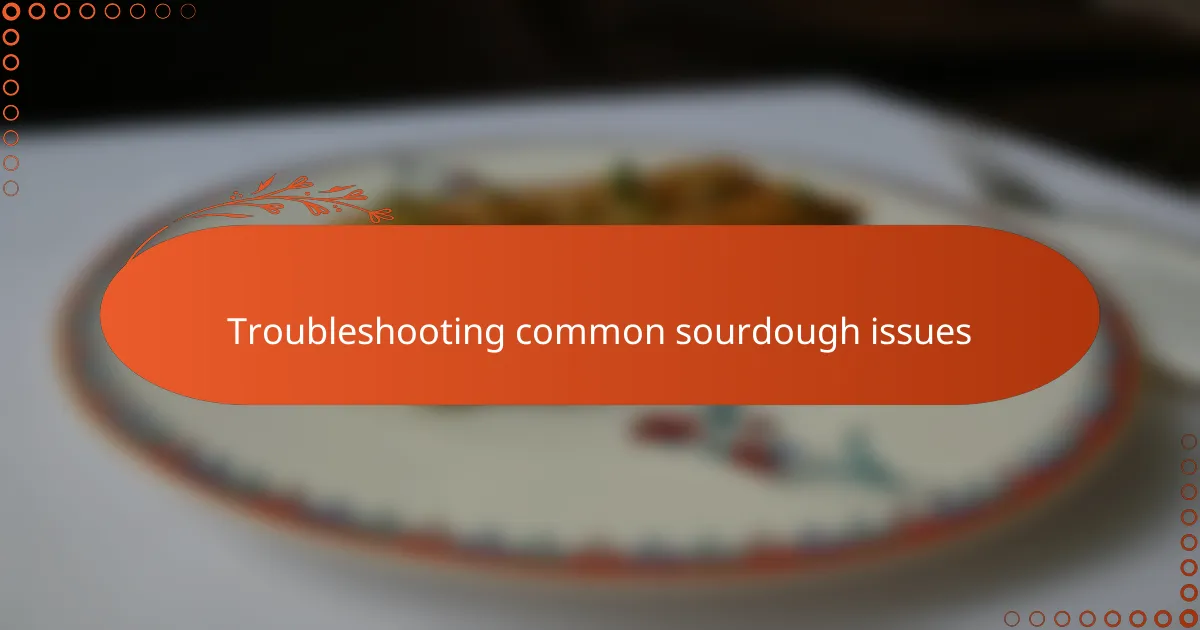
Troubleshooting common sourdough issues
One challenge I often faced early on was a dense, heavy loaf. I learned that this usually meant the dough didn’t ferment long enough or the starter wasn’t active enough. It was frustrating at first, but paying attention to the starter’s bubbles and aroma helped me know exactly when the dough was ready to rise—kind of like tuning into its mood.
Cracked or oddly shaped crusts were another puzzle. At first, I thought these flaws meant I was failing, but I discovered they often result from underproofing or scoring too shallowly. Once I started scoring with a sharp lame and letting the dough proof until it jiggles slightly, my loaves suddenly looked and tasted so much better. Have you ever noticed how these small technical tweaks suddenly unlock your bread’s potential?
Oh, and the notorious sticky dough! I used to dread handling it until I realized that flour hydration and environment play big roles. Sometimes it’s about adding just a bit more flour during kneading or dusting your hands to avoid sticking. I remember my first smooth, easy-to-handle dough felt like a breakthrough—turns out patience and practice really tame this wild, living mixture.
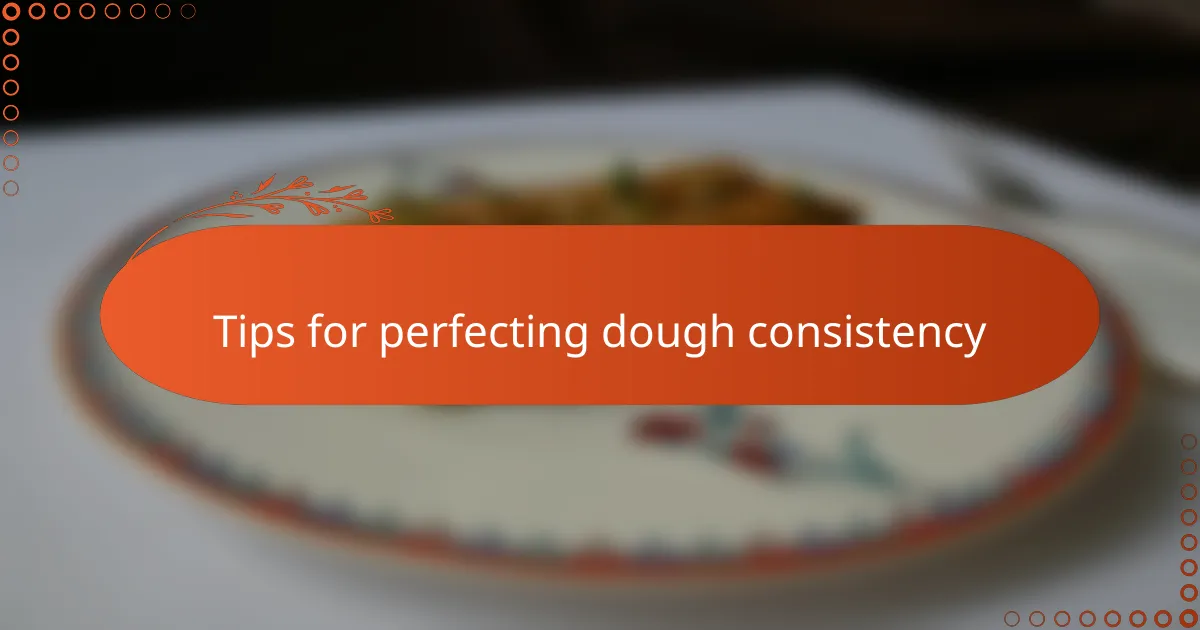
Tips for perfecting dough consistency
Getting the dough consistency right felt like trying to catch smoke at first. King Arthur’s guides emphasize watching your dough, not just measuring ingredients. I found that the dough should feel slightly tacky but not sticky—like a soft, pliable pillow that springs back gently when pressed. Have you ever hesitated to add more flour, fearing a dry loaf? Trust me, a little patience here pays off.
I’ve also learned that temperature and humidity are secret players in dough consistency. On humid days, the dough seems wetter, so I decrease water a bit; in drier seasons, I add a touch more. This kind of mindful adjustment wasn’t obvious at the start, but now it feels like having a conversation with my dough rather than following orders. Do you listen to your dough as much as I do?
Finally, the feel of the dough during stretch and folds reveals so much about its readiness. When it resists and gently unfolds without tearing, I know I’m on track. That tactile feedback—something King Arthur’s method encourages—turns baking into an intimate experience. Isn’t it amazing how your hands can become your best baking tool? For me, this connection transformed every loaf into a personal triumph.
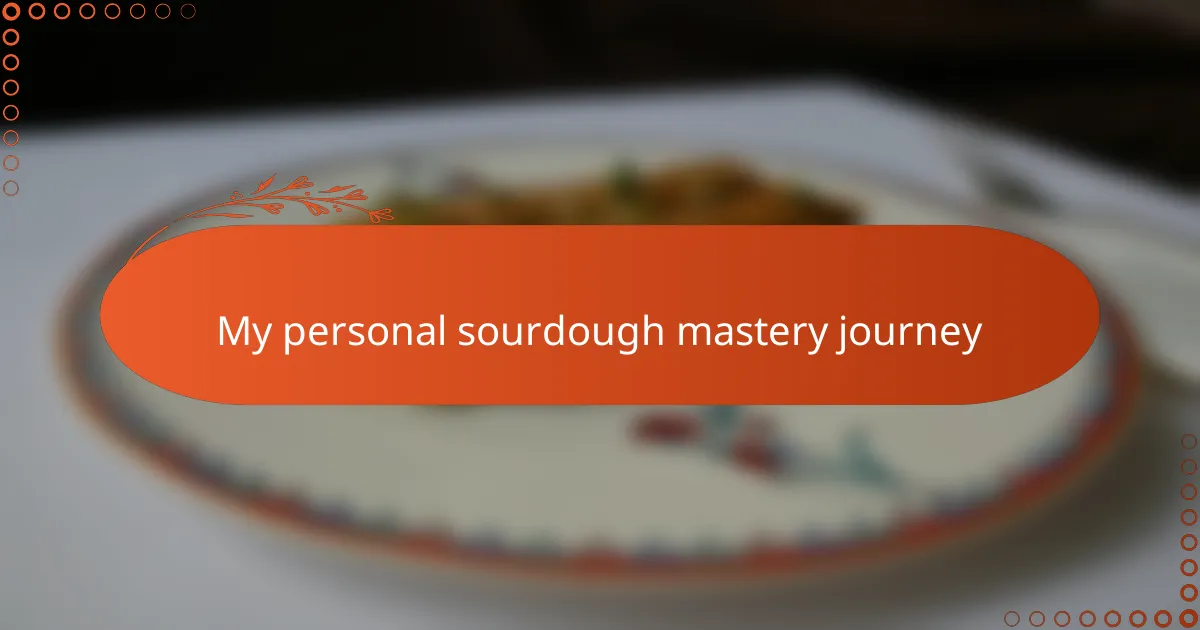
My personal sourdough mastery journey
Mastering sourdough with King Arthur flour was both a challenge and a joy that unfolded over countless kitchen hours. I remember the early days when my loaves were more like dense bricks, making me question if I could ever get it right. Yet, each misstep taught me something new, and that steady progress felt incredibly rewarding.
One moment that stands out is when I finally pulled a loaf from the oven that had a perfect, crackly crust and an open crumb—something I’d only dreamed of before. It was as if King Arthur’s guidance gave me the confidence and framework I needed to listen to my dough and develop my own instincts. Have you ever had that breakthrough moment where all the pieces suddenly click? That’s exactly how it felt.
Through this journey, I’ve come to realize that mastering sourdough isn’t about perfection; it’s about passion, patience, and connecting with the living nature of bread. Each loaf holds a story of trial, error, and small victories, making every bake deeply personal. Don’t you think that’s what makes sourdough baking so uniquely fulfilling? I certainly do.
